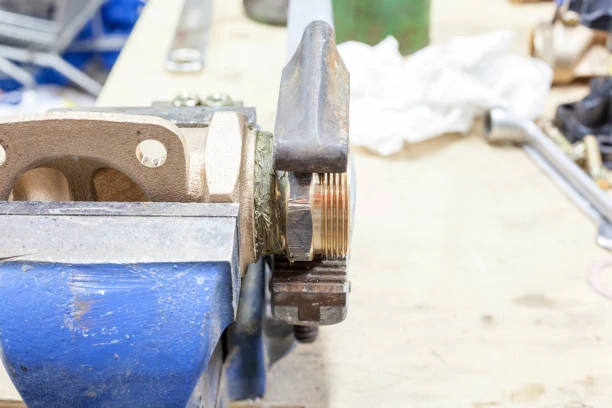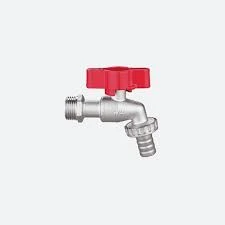The safety and quality of drinking water are paramount, and ensuring that plumbing systems are free from harmful materials like lead is essential, Over the years, concerns about lead contamination have led to stricter regulations and a shift towards lead-free pipes, brass pipe fittings, fixtures, solder, and flux in plumbing systems. Using lead-free materials helps to protect public health and ensures that drinking water remains safe for consumption. In this article, we will explore the importance of using lead-free plumbing components, focusing on brass fittings, and how they contribute to safer water systems.
The Shift to Lead-Free Plumbing Components
Lead was historically us in many plumbing products, including pipes, brass fittings, solder, and fixtures. However, it was discovered that lead can leach into drinking water, especially when water sits in pipes for an extend period. Exposure to lead-contaminated water can cause severe health problems, particularly in children and pregnant women. As a result, governments and health organizations have implemented regulations to limit the use of lead in plumbing systems.
In the United States, the Safe Drinking Water Act (SDWA) and its amendments have established strict limits on the amount of lead allowed in plumbing materials. Since 2014, the act has required that all pipes, fittings, and fixtures us in drinking water systems be considered “lead-free,” meaning they contain no more than 0.25% lead. This regulation applies to all components that come into contact with drinking water, including brass fittings.
Why Lead-Free brass pipe fittings Are Essential for Drinking Water
Brass fittings are widely us in plumbing systems due to their strength, durability, and resistance to corrosion. However, traditional brass fittings often contained lead, which was us to make the material easier to machine and form into complex shapes. Lead-free brass fittings are now the standard for drinking water applications, ensuring that harmful lead cannot leach into the water supply.
Lead-free brass fittings offer the same benefits as traditional brass but are manufactur using alternative materials that comply with modern safety regulations. These fittings provide a reliable, long-lasting solution for plumbing systems and help to ensure that drinking water remains safe for households and communities.
Benefits of Lead-Free brass pipe fittings
Using lead-free brass fittings in plumbing systems offers several important benefits, both for public health and the longevity of the plumbing infrastructure:
- Health Protection: The primary benefit of lead-free brass fittings is the protection they provide against lead contamination in drinking water. Lead exposure can cause developmental issues in children, as well as kidney damage and high blood pressure in adults. By using lead-free components, households can minimize the risk of lead exposure.
- Durability and Corrosion Resistance: Brass is known for durability and resistance to corrosion, making an excellent material for plumbing fittings. Lead-free brass retains these qualities while eliminating the health risks associated with lead. These fittings can withstand the pressures and temperature changes in both hot and cold water systems without deteriorating over time.
- Compliance with Regulations: Using lead-free brass fittings ensures compliance with local, state, and federal regulations regarding drinking water safety. These fittings meet the requirements of the Safe Drinking Water Act and other regulatory standards, protecting both consumers and contractors from potential legal and financial consequences.
- Compatibility with Various Pipe Materials: Lead-free brass fittings are compatible with a wide range of pipe materials, including copper, PEX, and CPVC. This versatility makes them suitable for a variety of plumbing systems, whether in residential, commercial, or industrial settings.
- Cost-Effective Solution: While lead-free brass fittings may have a slightly higher upfront cost than their leaded counterparts, they offer long-term cost savings by reducing the risk of health-related issues and potential legal liabilities. Their durability also means fewer repairs and replacements over time.

The Importance of Lead-Free Fixtures
In addition to lead-free brass fittings, the use of lead-free fixtures is essential for maintaining the safety of drinking water. Fixtures such as faucets, valves, and showerheads often come into direct contact with the water that people drink and use daily. Lead-free fixtures are design to meet the same stringent standards as lead-free pipes and fittings, ensuring that no harmful materials can leach into the water.
When choosing plumbing fixtures for a home or business, it’s crucial to look for products that are label as lead-free or compliant with the Safe Drinking Water Act. Many manufacturers now offer a wide range of lead-free fixtures that provide the same functionality and aesthetic appeal as traditional options.
Lead-Free Solder and Flux
Solder and flux are us in the installation of copper pipes and fittings to create watertight seals. In the past, lead-bas solder was commonly us in plumbing systems, but modern regulations now require the use of lead-free solder for any plumbing applications involving drinking water. Lead-free solder is typically made from a combination of tin, copper, silver, or antimony.
Flux is applied to the joint before soldering to clean the surface and help the solder flow into the joint. It’s essential to use lead-free flux to ensure that no lead is introduc into the plumbing system during the installation process. Lead-free solder and flux are critical components in maintaining a lead-free water supply.
Challenges of Transitioning to brass pipe fittings Lead-Free Plumbing Materials
While the shift to lead-free plumbing materials has been overwhelmingly positive for public health, it has also presented some challenges for manufacturers, plumbers, and homeowners. These challenges include:
- Cost Considerations: Lead-free brass fittings and fixtures can be more expensive than their leaded counterparts due to the materials and processes required to manufacture them. However, the long-term health benefits and compliance with regulations make the investment worthwhile.
- Material Properties: Lead-free brass can be slightly harder to machine and work with compar to traditional brass, as lead was previously used to improve machinability. Manufacturers have adapted to this challenge by refining their production processes, ensuring that lead-free brass fittings are as reliable and easy to use as leaded fittings.
- Public Awareness: While most people are now aware of the dangers of lead in drinking water, there is still a need for continued education on the importance of using lead-free plumbing materials. Homeowners and contractors must understand the regulations and know how to identify lead-free products to ensure the safety of their water supply.
Ensuring a Safe Drinking brass pipe fittings Water Supply
To ensure a safe drinking water supply, it’s essential to use lead-free pipes, brass fittings, fixtures, solder, and flux in any plumbing system. Whether you’re installing a new system or updating an existing one, lead-free components are the only way to guarantee that your water is free from harmful lead contamination.
Homeowners should also have their water tested regularly, particularly if they live in an older home that may still have lead pipes or fittings. Testing can identify any potential contamination issues, allowing for prompt action to be taken to replace lead-containing components with lead-free alternatives.
Conclusion brass pipe fittings
The use of lead-free pipes, brass fittings, fixtures, solder, and flux is essential for ensuring the safety of drinking water. By complying with modern regulations and choosing lead-free materials, homeowners, contractors, and businesses can protect public health and prevent the risks associated with lead contamination. Lead-free brass fittings, in particular, offer durability, versatility, and reliability, making them an ideal choice for any plumbing system. The investment in lead-free plumbing components not only safeguards health but also ensures compliance with the law and contributes to a longer-lasting, efficient water system.
FAQ
1. Why is it important to use lead-free brass fittings in drinking water systems?
Lead-free brass fittings prevent lead contamination in drinking water, reducing health risks like developmental issues in children and kidney damage in adults.
2. Are lead-free brass pipe fitting more expensive than traditional fittings?
Yes, lead-free brass fitting can be slightly more expensive due to the materials and manufacturing processes, but they offer long-term health and safety benefits.
3. Can lead-free brass pipe fitting be us with different types of pipes?
Yes, lead-free brass fittings are compatible with various pipe materials, including copper, PEX, and CPVC, making them versatile for different plumbing systems.
4. What are the key regulations governing the use of lead-free plumbing materials?
The Safe Drinking Water Act in the U.S. mandates that all plumbing materials used in drinking water systems must contain no more than 0.25% lead.
5. Do lead-free solder and flux need to be us in conjunction with lead-free fittings?
Yes, lead-free solder and flux are essential when installing copper pipes and fittings to ensure no lead is introduc into the water system.


















